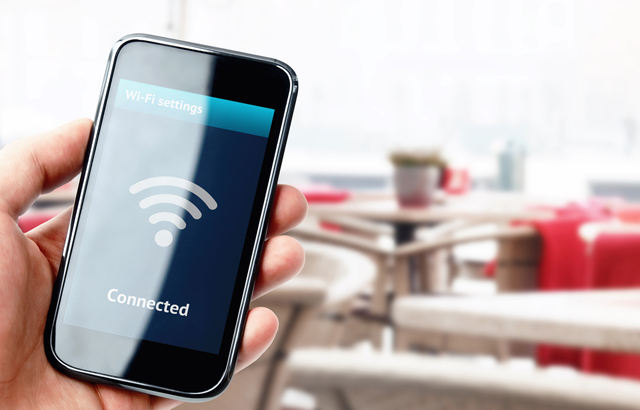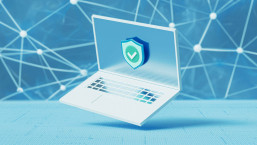The convenience of Wi-Fi for most people is invaluable. Whether it is at home, in the workplace or out and about – even on holiday – we long to get connected wirelessly. It is, therefore, an increasingly important asset, especially in these ever-busy, mobile and interconnected times.
As such, being able to access it, anytime and anyplace, is essential to how we now live. In response to this, public Wi-Fi infrastructure is growing rapidly to meet our insatiable appetite for this service.
However, as advantageous as it is, there are risks associated with signing up to public hotspots, which many people seem to forget. We’ve all done it. We’ve all gone to a coffee shop or hopped onto a train and clicked to connect to the free Wi-Fi, without a second thought for whether it’s legitimate or secure.
We also seem to be quite happy to send our personal details to an unknown supplier or hotel offering these services just so we can get online, and if you’re lucky we may have only skimmed the provider’s terms and conditions. Yet, we should be more vigilant – the risks are plentiful.
With all this in mind, here are 10 tips to staying safe on public Wi-Fi.
- Check the authenticity
Always ask the owner of the Wi-Fi hotspot for the correct network name and password.
Be wary if there is no WPA or WPA2 password (for Wi-Fi protected access), as this will mean the connection is unencrypted, and pay close attention to potentially spoofed hotspots that bear close resemblance to the official name.
- Look for HTTPS

You should ensure that the web pages you visit are https encrypted where possible. You can check this by looking for https at the start of the URL address bar, or for the security padlock sign.
This indicates that the website, and that particular page, has a valid digital certificate and up-to-date SSL/TLS encryption, thus making Man-in-the-Middle (MiTM) attacks much less likely.
If there is no encryption, log out – especially if you’re doing something sensitive like online banking. You should also pay close attention to mobile sites, as there’s no guarantee they will be https.
- Patch before you go
"Patching software regularly is essential security practice, especially with Wi-Fi."
Patching and updating software on a regular basis is an essential security practice, especially when it comes to Wi-Fi.
You should keep your web browser, software and antivirus solution up-to-date to fix bugs, while an up-to-date antivirus engine will scan, detect and remove the latest threats.
Attackers will sometimes take advantage of poor patching by tricking unsuspecting users into downloading something they believe to be a software update. However, they will quickly realise that their machine has been infected with malware instead.
- Avoid accessing sensitive information
By and large, public Wi-Fi networks should not be used to access email, online banking and credit card accounts, or any other sensitive data for the matter. Your best bet is doing that from home, where hopefully your internet service provider delivered router is both password-and firewall-protected.
- Manually select Wi-Fi networks

Make sure your laptop, tablet or smartphone are set to manually select a Wi-Fi network, rather than having it automatically connect. Also, turn off sharing and Wi-Fi capabilities when the wireless is not in use, as this cut downs possible avenues for cybercriminals to exploit.
You should also remember to tell your phone or tablet to ‘forget’ certain networks if they are no longer in use or required, as this could mean your device will automatically reconnect when back in range.
- Use a VPN
If you travel a lot and don’t have a cellular dongle but still need connectivity, consider a virtual private network (VPN). This is a safe way of surfing the web in an encrypted manner.
VPN solutions provide encryption and security across public networks, as well as masking your IP address so that opportunities for phishing are dramatically reduced.
- Utilise additional security tools
There is a much greater focus on online privacy than ever before, and so the likes of Tor, VPNs and DoNotTrack have become increasingly popular.
And, with regard to public Wi-Fi, you may find extensions useful in forcing encryption on websites that aren’t encrypted by default. This doesn’t protect you on all sites, but it will help for most.
- Adopt 2FA
Enable two-factor authentication where possible. 2FA is increasingly seen as the future of authentication and it is wise for anyone using a hotspot. This per-website step adds an extra layer of protection for public password-sniffing hackers to try and overcome.
- Logout when finished
Don’t stay permanently signed in to your personal accounts when accessing public Wi-Fi hotspots as you may leave yourself exposed. For further security, log out from each website after each session.
- Turn off Wi-Fi if not in use
If you want to guarantee your security and you're not actively using the internet, simply turn off your Wi-Fi. This is extremely easy in both Windows and OS X and will go a long way in protecting you from cybercriminals - the longer you stay connected, the longer people have to notice you're there and they will start snooping around.





